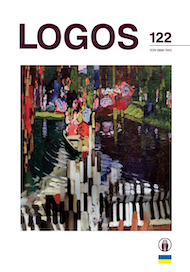Religingumo dinamika ir sociokultūrinės įtakos XVIII–XIX a. Lietuvos valstietijoje: liaudies raižiniai ir jų vaidmuo religinėje kultūroje
The Dynamics and Sociocultural Influences of Religiosity in Lithuanian Peasantry of the 18th–19th Century: Folk Woodcuts and Their Role in Religious Culture
Author(s): Vilma KilinskienėSubject(s): Cultural history, Customs / Folklore, Social history, Cultural Anthropology / Ethnology, 18th Century, 19th Century
Published by: Visuomeninė organizacija »LOGOS«
Keywords: christianity; peasantry; sociocultural context; religiosity; woodcuts;
Summary/Abstract: The article analyses how historical circumstances and socio-cultural context influenced the religiosity of Lithuanian peasants in the 18th and 19th centuries, and how folk woodcarvings contributed to the strengthening of Christianity in the peasantry. Despite the spread of Christianity, peasant communities have long maintained pre-Christian traditions, combining them with Christian practices. The analysis explores the role of church-run schools, religious texts, and visual representations in fostering literacy and a more conscious acceptance of Christianity. However, the study also highlights the persistence of scepticism towards the clergy throughout most of the 18th century. Christianity thus became both a religious and a cultural factor, shaping the life of Lithuanian peasant communities and their relationship with their environment. The integration of Christian culture into the everyday life of the peasantry was further strengthened by folk woodcuts, which conveyed religious content in a manner that was both comprehensible and attractive to the peasants.
Journal: LOGOS - A Journal of Religion, Philosophy, Comparative Cultural Studies and Art
- Issue Year: 2025
- Issue No: 122
- Page Range: 186-195
- Page Count: 10
- Language: Lithuanian

